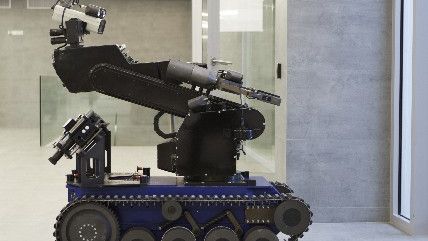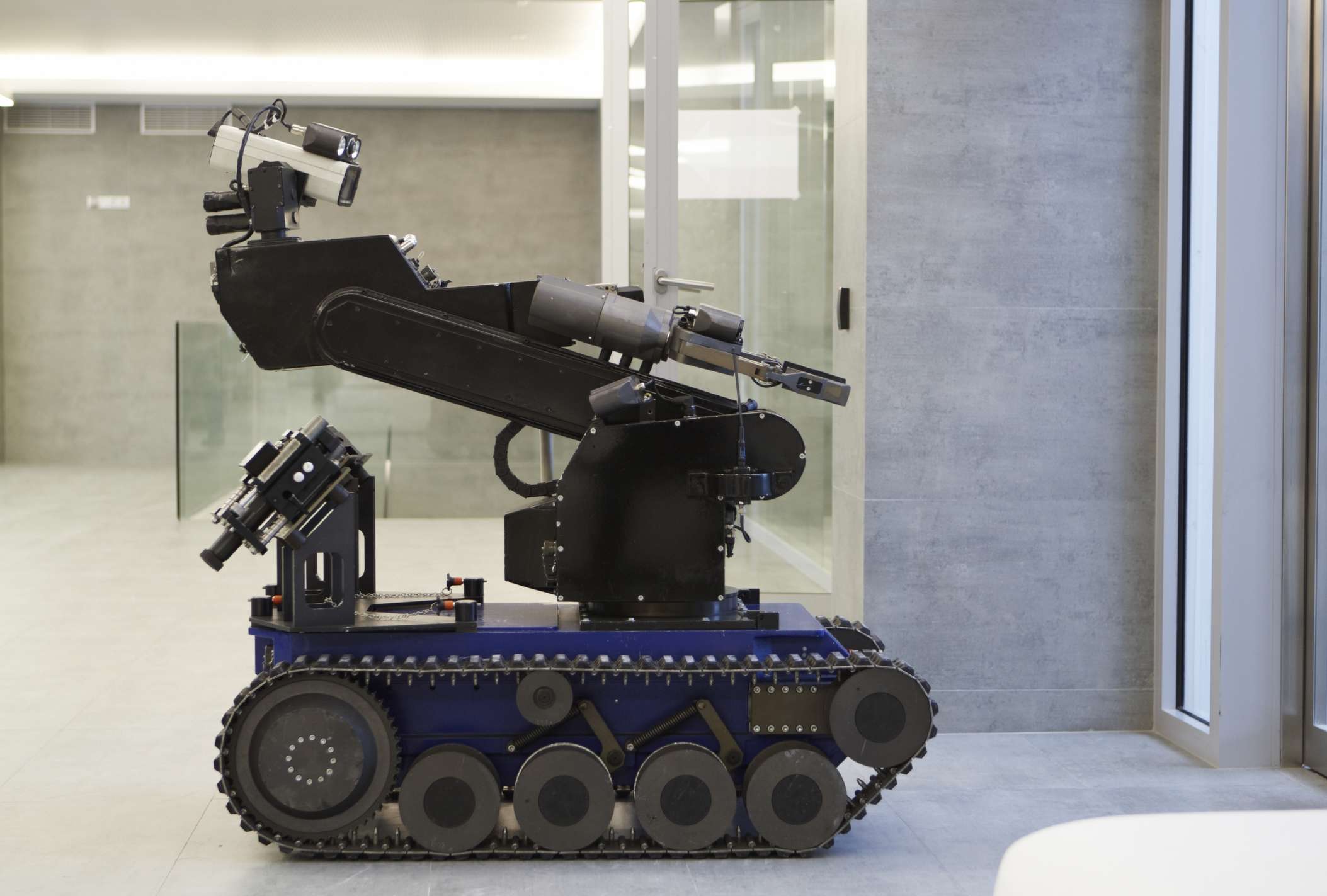Dallas PD Used a "Bomb Robot" to Neutralize Alleged Cop-Killing Sniper
The use of a "bomb robot" to take down a suspect appears to be a new police tactic.


Dallas Police Chief David O. Brown said at a press conference this morning that the alleged Dallas police-targeting sniper was killed by a bomb placed in the suspect's vicinity by a "bomb robot."
The suspect, identified as 25-year-old former Army reservist and Afghanistan veteran Micah Xavier Johnson, was apparently cornered in a parking garage at El Centro College where during hours of negotiations with police he said he had planted a number of explosives around the city and that he "wanted to kill white people."
Chief Brown was quoted in Business Insider as saying that after a prolonged shootout with Johnson, "We saw no other option but to use our bomb robot and place a device on it for it to detonate where the suspect was. Other options would have exposed our officers to grave danger. The suspect is deceased, as a result of the detonating of the bomb."
Brown's wording makes it unclear whether Johnson was killed by the bomb robot detonating an explosive owned by the Dallas PD or whether the robot detonated a device which caused a bomb in Johnson's possession to explode. Either way, this appears to be a new tactic to policing, though commonly used by U.S. forces in Iraq.
Motherboard reports:
The sort of ground robots used in those scenarios—and now the one that played out in Dallas—are not autonomous, and are usually used strictly for bomb disposal. These devices have been weaponized, however, as seen with US military bomb bots fitted with machine guns. (The military says the guns are for shooting suspected explosive devices.) In the United States, Remotec bomb disposal robots used by law enforcement have been outfitted with guns that are designed to detonate bombs in a controlled manner.
Peter W. Singer, an expert in military technology and robot warfare at the New America Foundation, tweeted that this is the first known incident of a domestic police force using a robot to kill a suspect. Singer tweeted that in the wars in Iraq and Afghanistan, soldiers have strapped claymore mines to the $8,000 MARCbot using duct tape to turn them into jury-rigged killing devices. Singer says all indications are that the Dallas Police Department did something similar in this case—it improvised to turn a surveillance robot into a killing machine.
Given that Johnson was clearly unafraid to die and hell-bent on killing police officers, it's understandable that at a certain point the Dallas PD felt their best bet at ending the siege without further carnage was to use a tool which would keep their officers out of harm's way. Still, there are concerns that with more and more automated tools at police's disposal (NPR reported in 2014 that 479 bomb robots were distributed to law enforcement agencies through the Defense Department's 1033 Program), the risk of dehumanizing suspects through the use of such impersonal weaponry grows, as does the risk of mission creep.
When SWAT teams were first introduced, they were intended for extremely rare and high-risk events like hostage situations and terror attacks. Decades later, upwards of 80 percent of SWAT deployments are merely to serve warrants, sometimes using MRAPs and flash-bang grenades, with the reasoning from law enforcement generally focused on an abundance of caution for officers, but not the public.
In 2014, Albuquerque police reportedly directed a bomb robot to deploy "chemical munitions" (perhaps tear gas?) on a "barricaded subject armed with a gun," and in 2015 the California Highway Patrol used a bomb robot to deliver a pizza to a suicidal man, which lead to the man's peaceful surrender. Clearly, advances in technology have reasonably practical uses for law enforcement, but now that the Dallas PD has deployed a robot with a bomb to end a standoff, and North Dakota has legalized the use of police drones armed with Tasers and pepper spray, a national conversation over the reasonable limits of force with the aim to protect the lives of both police and the citizenry is well worth having.
In 2013, Kentucky Sen. Rand Paul delivered a famous filibuster motivated in part by his demand that President Obama make clear whether or not he believes he has the authority to use drone strikes on American citizens (Former Attorney General Eric Holder eventually answered that question with a "no"). Some critics thought Paul was a crazy alarmist, but it's not crazy to ask for specific protocols on the use-of-force with regards to ever-advancing militarized technology, and now is as good a time as any to have that conversation.


Show Comments (243)